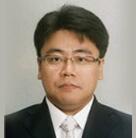Invited Speaker

Yutaka Fukuchi
Associate Professor, Tokyo University of Science, JapanSpeech Title: Optical frequency comb source employing a short bismuth-based nonlinear erbium-doped fiber
Abstract: Optical frequency comb sources with multi-gigahertz spacing are very important for many practical applications such as optical frequency reference, multi-wavelength lasers, optical signal processing, short pulse generation, and coherent optical waveform syntheses. Good spectral flatness, wide operation bandwidth, high coherence, high stability, low noise, and low cost are commonly required for those optical frequency comb applications. Several methods to produce the optical frequency comb have been proposed and demonstrated in the past. Especially, actively and harmonically mode-locked fiber ring lasers have become an attractive candidate for the optical frequency comb sources. The actively and harmonically mode-locked fiber ring lasers generally feature wide wavelength range, short pulse width, small timing jitter, and high repetition frequency. However, it is difficult to produce an optical frequency comb with good spectral flatness. One of the difficult challenges in the actively and harmonically mode-locked fiber ring lasers is how to produce a spectrally flat optical frequency comb. Furthermore, the actively and harmonically mode-locked fiber ring lasers usually employ silica-based erbium-doped fibers as the intracavity gain media. Consequently, the tunable wavelength range of the actively and harmonically mode-locked fiber ring lasers is limited to the alternative of the conventional wavelength band region or the longer wavelength band region. The tunable wavelength range is also another important issue for the optical frequency comb sources. In this presentation, we review stable, wavelength-tunable, and flat optical frequency comb generation from a 10-GHz actively and harmonically mode-locked short-cavity fiber ring laser using a bismuth-based nonlinear erbium-doped fiber with a fiber length of 1.5 m and a bandwidth-variable tunable filter with a rectangular filter profile.
Biography: Yutaka Fukuchi was born in Tochigi, Japan, on April 29, 1975. He received the B.S. and M.S. degrees in electronics engineering from Tokyo University of Science, Chiba, Japan, in 1998 and 2000, respectively, and the Ph.D. degree in electronics engineering from the University of Tokyo, Tokyo, Japan, in 2003.
In 2003, he joined the Department of Electrical Engineering, Faculty of Engineering, Tokyo University of Science, Tokyo, Japan as an Assistant Professor. From 2003 to 2005, he was also a Co-operative Research Fellow in Research Center for Advanced Science and Technology, the University of Tokyo, Tokyo, Japan. Then, he became a Junior Associate Professor of Tokyo University of Science in 2006. Since 2009, he has been an Associate Professor at this university. From 2013 to 2014, he was a Visiting Research Fellow with the High-Speed Optical Communications Group, Department of Photonics Engineering, Technical University of Denmark, Lyngby, Denmark. His research interests are optical communications, quantum optics, nonlinear optics, and their applications.
Dr. Fukuchi is a member of the Institute of Electrical and Electronics Engineers (IEEE), the Optical Society of America (OSA), and the Institute of Electronics, Information, and Communication Engineers (IEICE).
